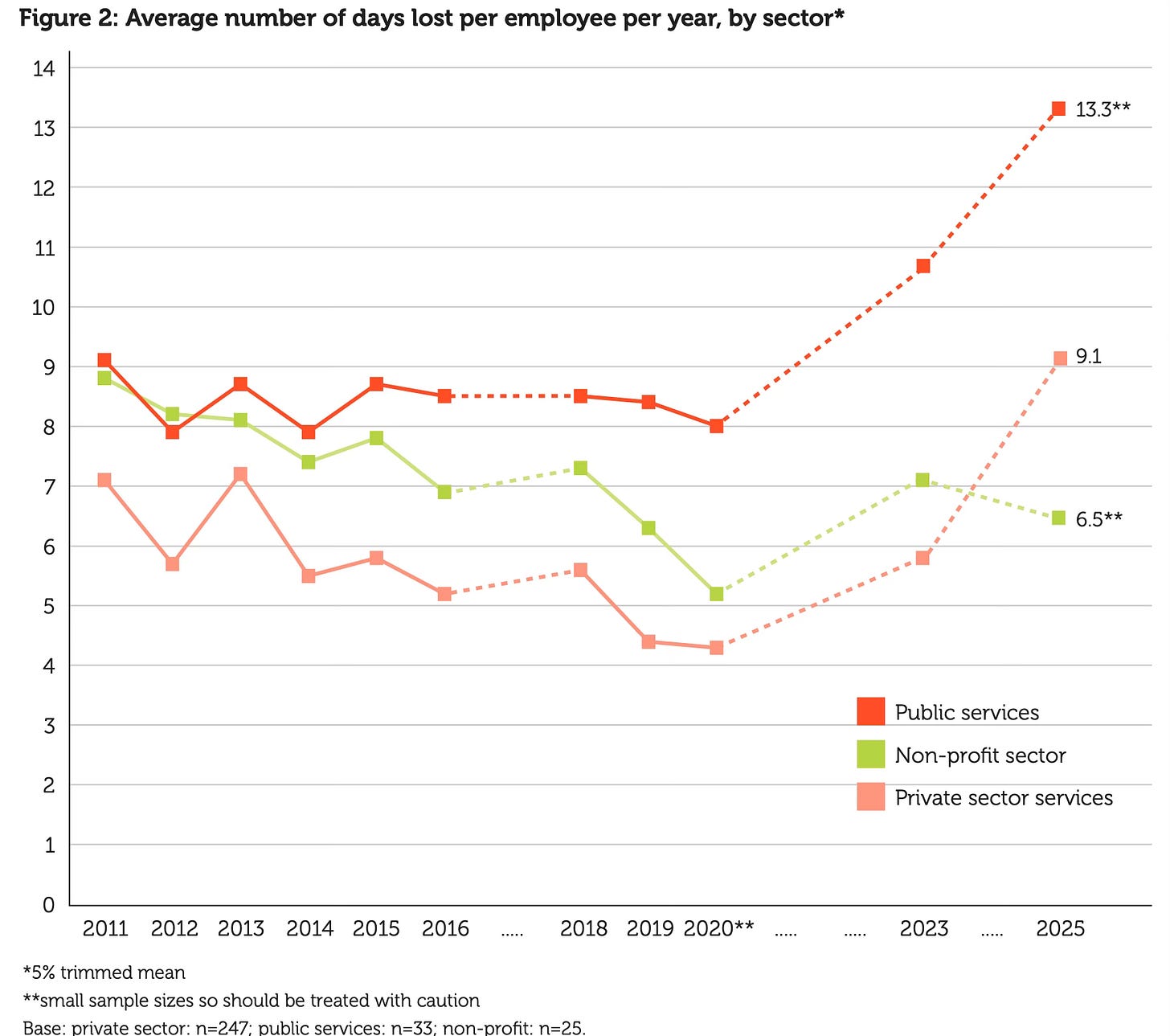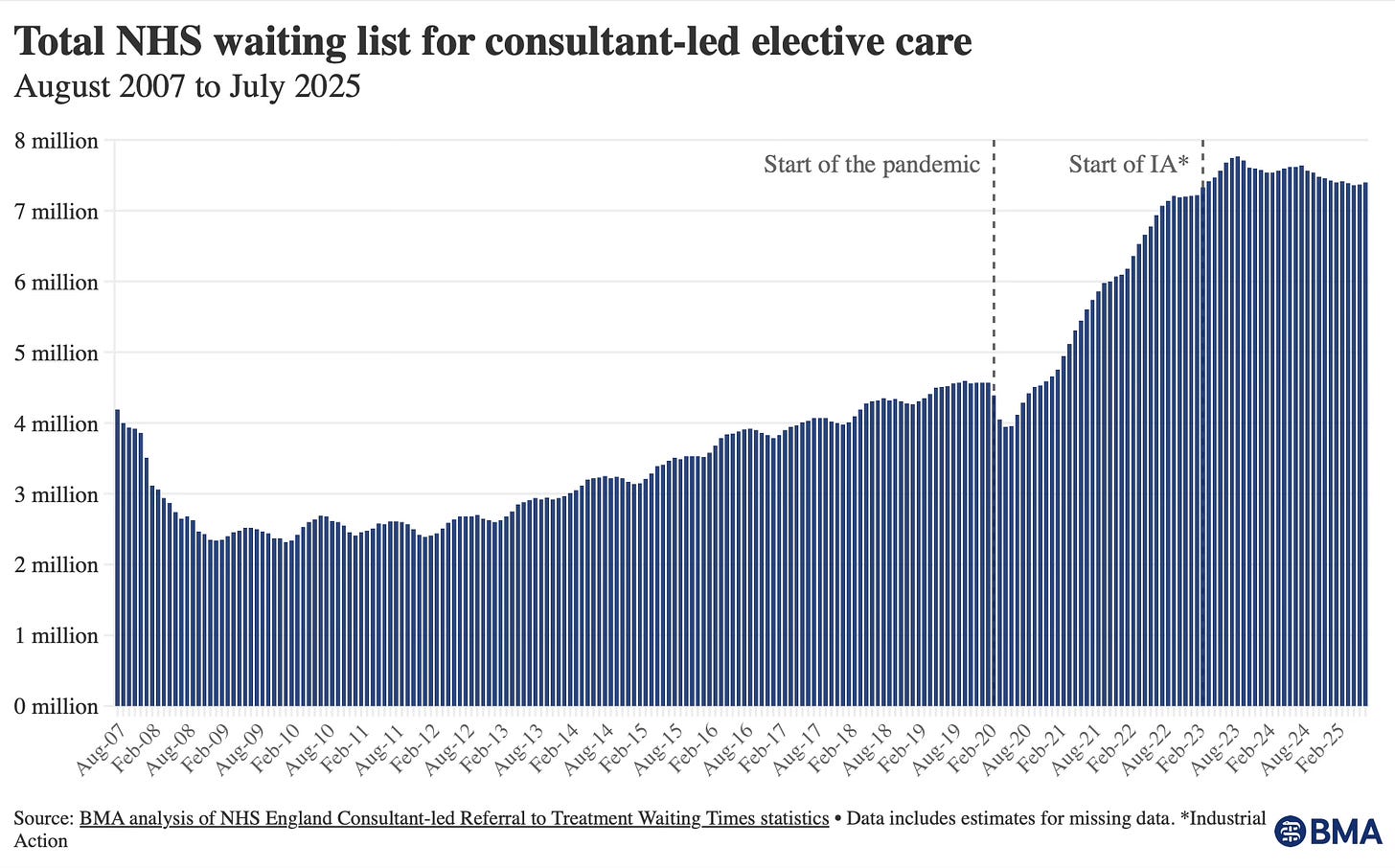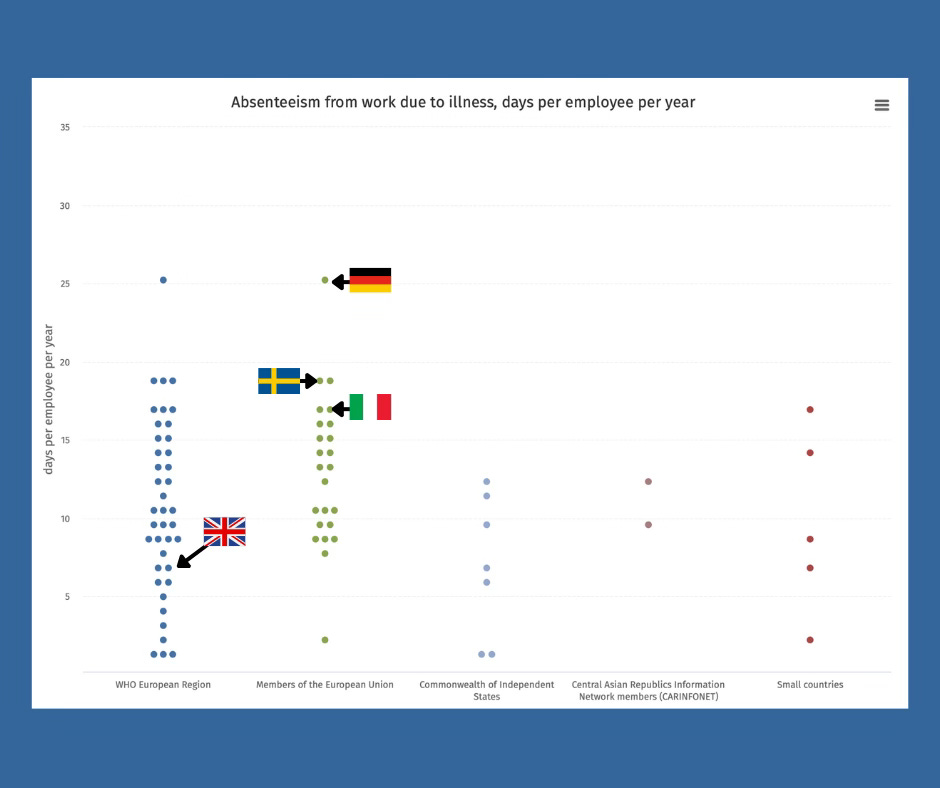The Sick Note Myth: Why Civil Servants Aren’t Skiving
HMRC staff take fewer sick days than the average British worker, but you wouldn’t know it from reading the Express.
Last week, the Express ran with a front page headline: “Civil servants miss 'shocking' number of work days by calling in sick”, so I thought I’d take a look at the claim and how it stacks up against the wider British workforce.
Now, anyone familiar with British right-wing discourse will know that there is a special venom reserved for civil servants and the public sector as a whole. They are regularly portrayed as “workshy”, particularly when they work from home.
The article contains this quote from the Tax Payers’ Alliance, a right-wing think tank:
“A simply unbelievable 1.6 million sick days have been taken over the past three years.
Could it be related to the low-standards culture prevalent in HMRC? One in which staff aren’t expected to turn up to work, with work from home rife.
You get the picture being portrayed here - lazy, low standards, not turning up for work (aka working from home), etc.
So, do the claims stack up, and how do they compare to the wider economy?
The claim
The total number of sick days declared by His Majesty’s Revenue and Customs between August 2024 and July 2025 was 551,064, down slightly from the 565,244 sick days taken the previous year, but up on the 540,052 days recorded between August 2022 and July 2023.
This data comes from a Freedom of Information request lodged by the Express.
66,000 people work for HMRC, which gives an average of 8.3 sick days per person over the last year within that department.
Is this number “simply unbelievable” or “shocking” compared to other sectors of the workforce?
Well, fortunately, the very next day, the Chartered Institute of Personnel and Development (CIPD) released their Health and Wellbeing at work 2025 report, which was widely reported on in the press (although interestingly not covered by the Express!).
The CIPD Report
They reported that average absence levels are 9.4 days per employee per year. This is the highest reported level of sick days in the 15 years since they started running their surveys, which is obviously a big problem that needs addressing.
But in the context of the Express headline and hyperbolic language, it shows that HMRC staff are no worse than the average British worker; in fact, they are taking fewer sick days than average (8.3 vs 9.4)
It’s possible that the Express chose not to cover the CIPD report, as it goes on to find that:
Working from home can lower absence and boost productivity
Over a third (36%) of organisations with employees working from home say that sickness absence rates have decreased as a consequence, compared with just 16% reporting an increase.
Respondents are twice as likely to report that productivity has increased (33%) than decreased (16%) as a result of homeworking.
Which is a bit awkward for a paper that describes home working as “an anti-office/pro-Hob Nob culture” and ran headlines such as “Boris backs Rees-Mogg over war on civil servants working from home…
The Reality
HMRC workers actually take fewer sick days than the average British worker, and businesses are twice as likely to report that home working reduces sickness absence rates and twice as likely to report an increase in productivity.
A very different picture from what the Express and the Tax Payers’ Alliance are trying to portray in that article.
But that Express article is far from a one-off on this subject…
Public vs Private sector
While the data on HMRC staff show them taking fewer sick days than the average, workers in the public sector as a whole do indeed appear to take more sick days than those in the private sector.
Screenshot from the the CIPD report
And the right-wing press loves to conflate the ‘civil service’ with the ‘public sector.’
Like in this article from last month:
Civil Service absence finally solved – with a hugely insulting explanation began with:
“Civil Service sick leave is on track to hit record levels but we have now at least learnt why – it’s your fault.
Analysis found more than four million working days a year are being lost and absence rates in some departments have gone up by 10%.
But no, it’s not that civil servants now ring in sick if they are made to go into the office, or that they have a bad case of lazyitis. It turns out the reason they are all dropping like flies is because they have to come into contact with the public.”
4 million working days across the 550,000 who work in the civil service equates to an average of 7.3 days per person - two days fewer than the average across the British workforce.
But despite the headline referring to civil servants, the bulk of the article seamlessly pivots to discussing the higher level of sick days across the public sector as a whole, and the reason given by the General Secretary of the FDA (A trade union for senior civil servants and public sector professionals):
“People working in front-facing roles dealing with the public are more likely to get minor illnesses more often. The public sector, that’s what they do, the majority of the public sector are not working in offices, they are working dealing with the public.”
The Express responded with:
“And implying members of the public are so grubby and whiffy that public sector workers must take to their beds is not only insulting, it stinks.”
So let’s quickly look at the make-up of the public sector and engage a bit of critical thinking about why the public sector may well have higher levels of sickness.
The civil service makes up only 9% of the public sector. By far the biggest employer is the NHS (33.5%), followed by the education sector (27%).
Now, why might those working in the NHS and those working with children be more likely to be exposed to the colds/flus and stomach upsets that make up the 78% of top reasons for short-term absences across the workforce??
That’s not “implying members of the public are grubby and whiffy”. That’s just a logical consequence of working with sick members of the public and small children!
Why are more people taking time off sick?
That is a big question, and one being gappled with by the government. But the take-home message from the CIPD report is that this is a consequence of an ageing workforce (the older you are, the more likely you are to have a chronic health problem that affects your ability to work) and a rise in the number of people suffering long-term health conditions, including mental health conditions.
With NHS waiting times for physical conditions being at all-time record highs in recent years, and waiting times for NHS mental health services sometimes being twice as long as those for physical health treatment, is it any wonder that we have such high numbers of people off work due to ill health?
Graph from www.bma.org.uk
How do we compare globally?
Is the UK unique in how much sick leave we take?
The i paper took a look at how our 9.4 days compared to other similar countries to see if this was a particularly British problem.
They found the following sick day averages globally:
USA 5.5 days
Australia 8.3 days
France 10.8 days
Norway 15.9 days
Germany 20 days
So we’re fairly middling in that list.
The World Health Organisation collates data on “Absenteeism from work due to illness, days per employee per year”, and while the UK data is a few years out of date, you can see where we sit in the wider context of Europe. Even at the 9.4 days suggested by the CIPD report, we sit pretty centrally compared to the rest of Europe.
Annotated Screenshot from the WHO European Health Information Gateway.
Take-home messages
The sick days taken by civil servants are no higher than those of the working population as a whole.
Working from home is associated with fewer sick days and greater productivity, not the other way around.
When you see the media conflate civil servants with the public sector, remember that the public sector includes NHS, teachers, police, the armed forces, health and social work, as well as civil servants and local government.
Final Lesson
I want to end on a little lesson in what to look out for when the media tries to conflate and confuse issues.
We’ll take the article Civil Service absence finally solved – with a hugely insulting explanation from the Express, and focus on the following paragraph:
Official figures show levels in the public sector are 50% higher, although rates in Whitehall are better than that. But even then, the Civil Service is expected to reach its highest level of staff sickness on record, topping the previous high of 8.3 days a year for every worker in 2023.
Yes, the CIPD data shows that public sector sickness days are higher than in the private sector (13.3 days vs 9.1 days).
Yes, Whitehall (aka civil service) rates are better than overall public sector rates (whether you use our calculated 7.3 days from the article [4 million days/550,000 civil servants] or the 8.3 days they use with no source). They are also better than the private sector, but that isn’t mentioned!
Yes, staff sickness is likely to reach its highest level, as it is across the whole workforce in Britain.
So, you can see how they have used three factually correct statements, but tied them together to paint a misleading picture. They are trying to push a narrative that civil servant sick days are a unique problem, when in fact the opposite is true.
Debunking narratives is not always about proving the facts wrong, but can instead involve untangling misleading language and conflation.
Keep an eye out for this when consuming your news!
Thank you to everyone who continues to support me with this work. Whether you subscribe and share my work, or you upgrade to a paid subscription or buy me a coffee, it all helps keep me going as I plumb the depths of twitter and the rich-wing media (I meant right-wing media, but the typo seemed fitting so I’m keeping it!😆)








The general public are whiffy & unhygienic - I speak as someone who worked in retail for years. They have filthy hands, they think nothing of coughing & snottering all over everyone else. I hate the GP.
Excellent article debunking the media's (Express) false narratives.